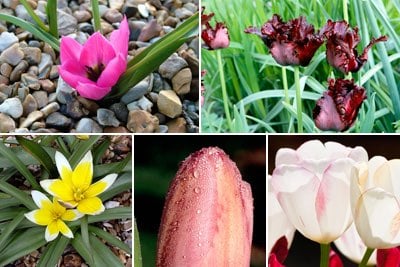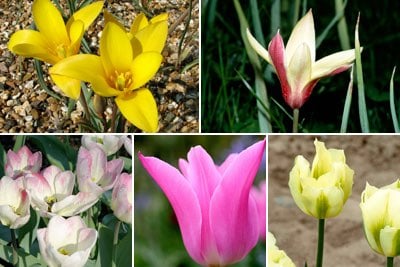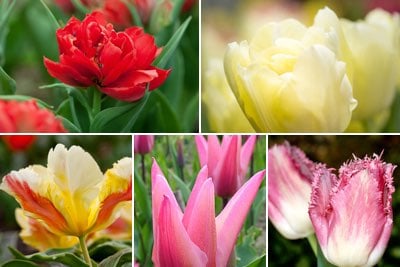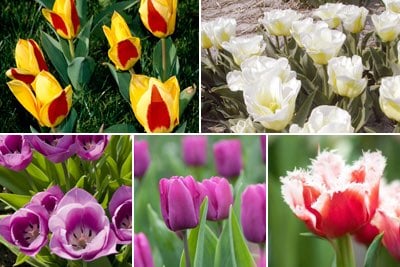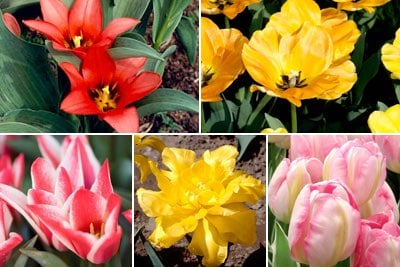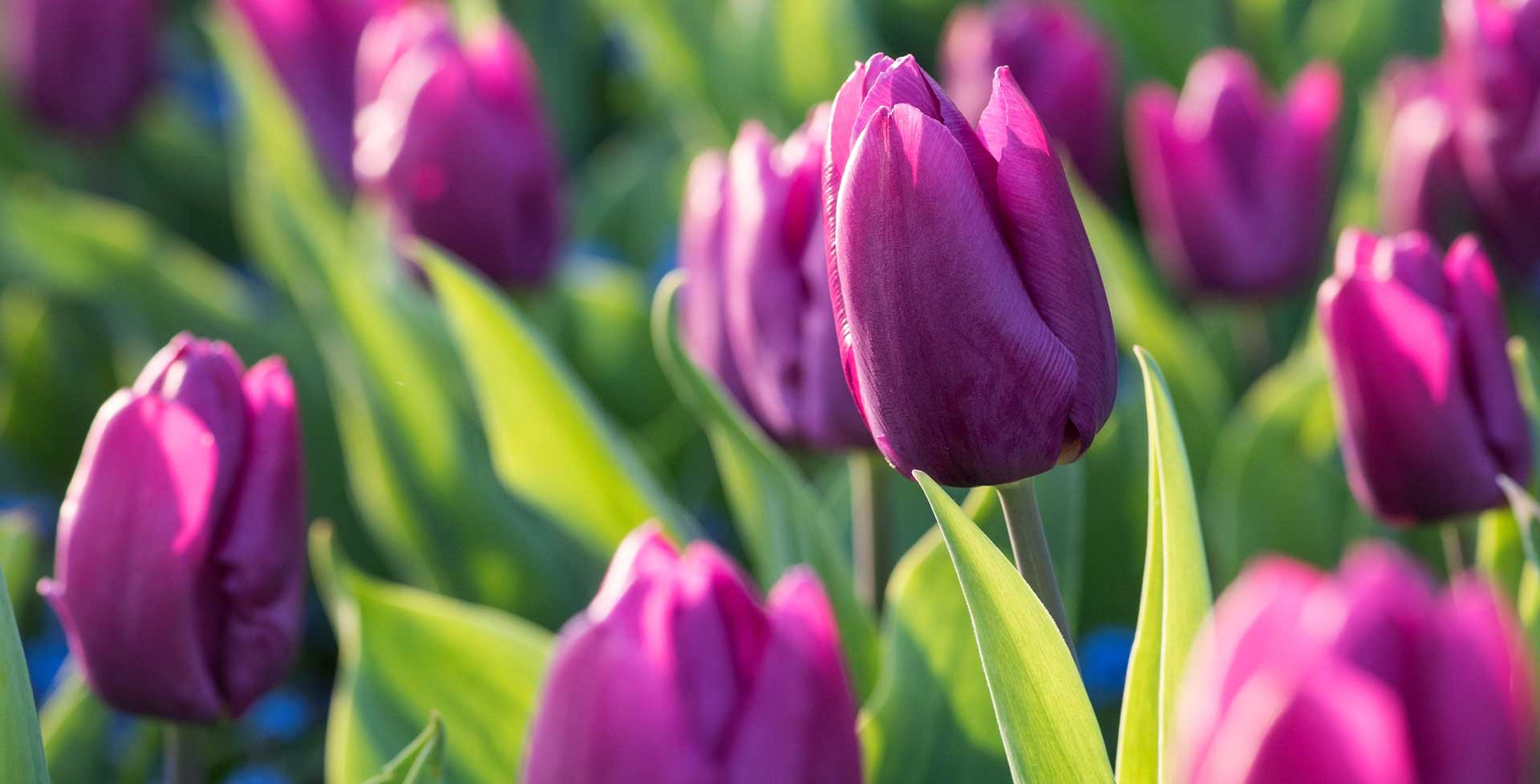
Introducing...
Tulip
Botanical name: Tulipa
Common name: Tulip
Tulips provide a splash of spring colour in dazzling shades. Different flower forms add to this variety, with lily-, fringed-, parrot- and peony-flowered forms. They are ideal for filling borders, growing in rock gardens and for bedding schemes. A few smaller specialist tulips are best grown in a cool greenhouse.
Looks
In mid- to late spring, cup-shaped flowers rise on single stems above wide strap-like green or green-grey leaves. Flowers stalks emerge from cream-white bulbs covered by a papery brown skin.
Likes
Tulips grow well in soil rich in organic matter. They like a cool moist conditions in spring, with a dry warm summer conditions for their summer 'rest' (dormancy). Most grow in an open position full sun, although some tolerate part-shade.
Dislikes
Tulips like good drainage, so don't do well on very heavy clay soils where bulbs may rot if the ground becomes waterlogged.
Did you know?
The species tulip, Tulipa sprengeri, was first introduced to cultivation in Turkey in the nineteenth century. Sadly, it is now extinct in the wild but still thrives in gardens, naturalising in part-shade on moisture-retentive soils.
Growing guide
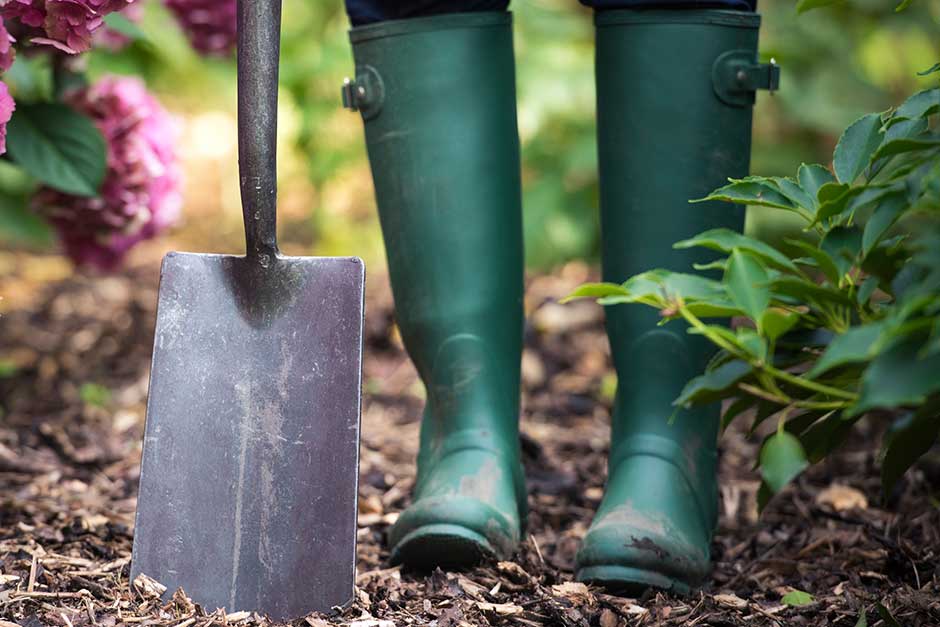
How to grow tulips
All the information you’ll need to grow & care for tulips in your garden.
Tulips we recommend
Tulipa 'Black Parrot' (10)
tulip 'Black Parrot'
- 0.1–0.5 metres
- 0–0.1 metre
Tulipa 'Pink Impression' (4)
tulip 'Pink Impression'
- 0.1–0.5 metres
- 0–0.1 metre
Tulipa 'Black Parrot' (10)
tulip 'Black Parrot'
- 0.1–0.5 metres
- 0–0.1 metre
Tulipa 'Pink Impression' (4)
tulip 'Pink Impression'
- 0.1–0.5 metres
- 0–0.1 metre
Useful advice

Bulbs: propagation

Bulbs: planting
Tulip viruses
Tulip fire
Get involved
The Royal Horticultural Society is the UK’s leading gardening charity. We aim to enrich everyone’s life through plants, and make the UK a greener and more beautiful place.


